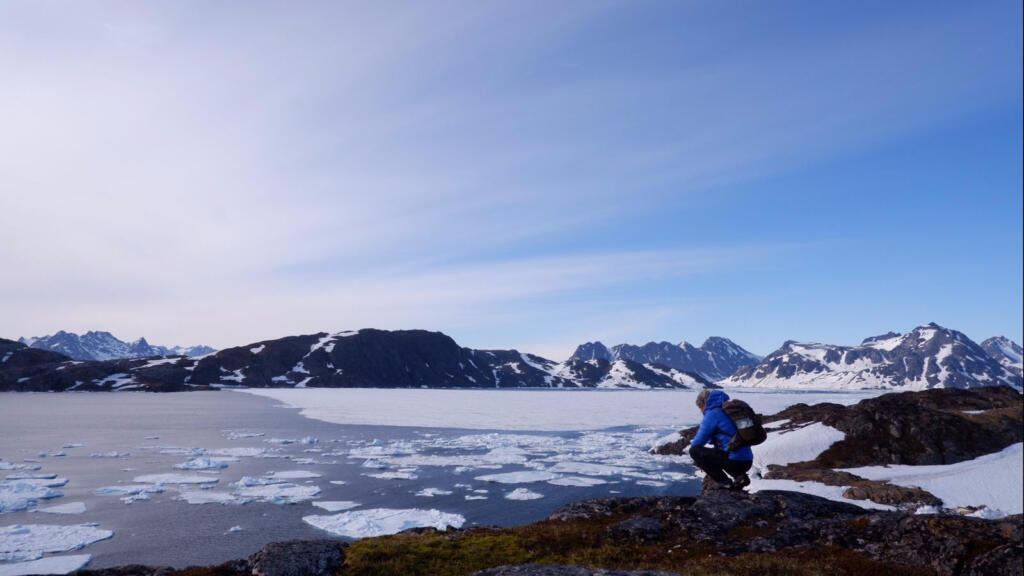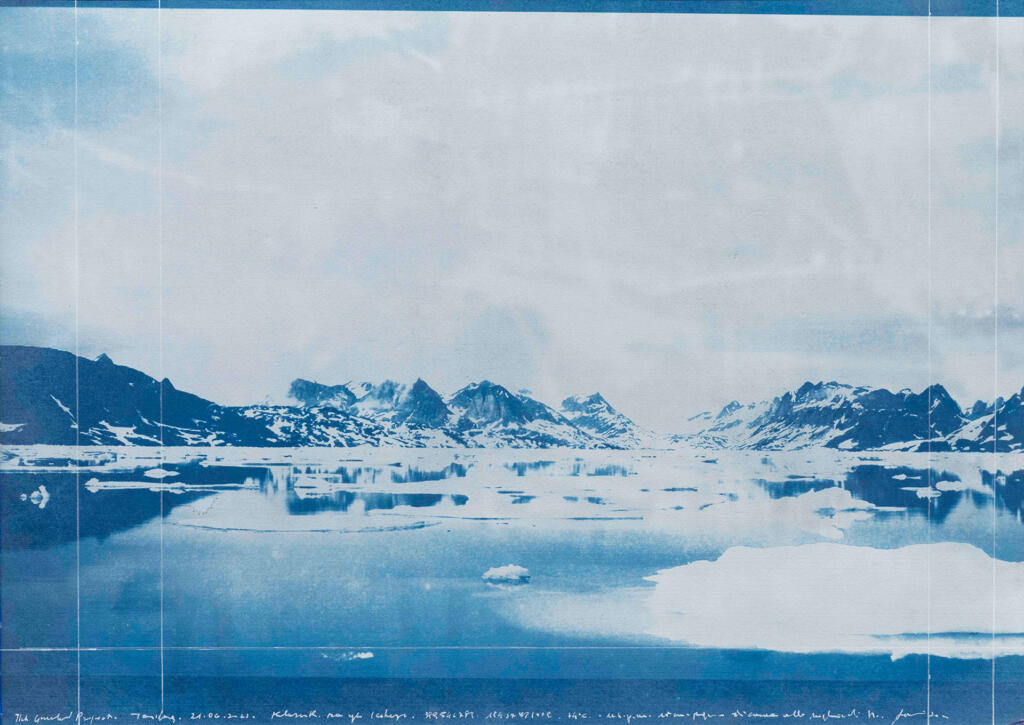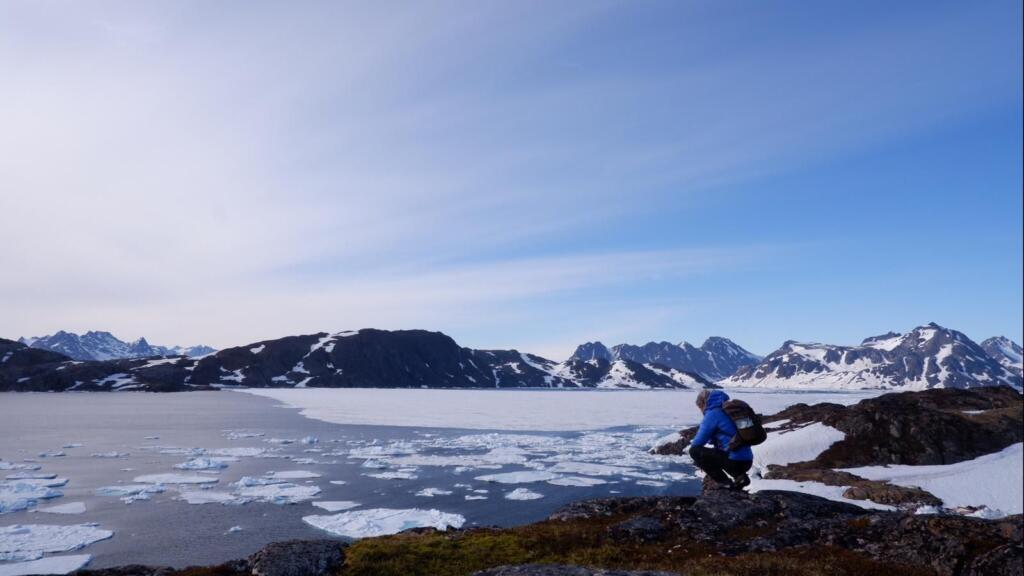
Roberto Ghezzi, an artist who places the “self-representation” of nature and natural phenomena at the center of his research, will embark on a new artistic/scientific expedition to the Svalbard Islands (NO) on July 12, 2023. These islands are the northernmost inhabited lands on the planet and the expedition will take place in Longyearbyen at the Spitsbergen Artists Center. The project is sponsored by the Italian Institute of Culture in Oslo and will be realized in collaboration with Dr. Fabiana Corami from the CNR ISP (Institute of Polar Sciences) and videomaker Leonardo Mizar Vianello.
As with the previous expedition to Tassilaq in Greenland, the artist intends, in this case as well, to document the melting of ice and provide a representation of the Arctic landscape, allowing the phenomenon of glacier state change to transcribe itself artistically in some way.
For the past twenty years, Roberto Ghezzi has partially relinquished traditional painting practices and instead embraced new creative approaches where nature itself leaves a series of traces on his canvases (Naturographies, the writing of nature on canvas). He also captures unique natural phenomena directly onto specially prepared mediums, such as cyanotypes of ice melting. Driven by his artistic obsession to faithfully represent natural phenomena by delegating the depiction to nature itself, Ghezzi has undertaken installations and research in numerous national and international locations. His work is closely intertwined with ecosystem and biology studies conducted in parks and nature reserves across continents, including Alaska, Iceland, South Africa, Tunisia, Norway, Patagonia, Croatia, Denmark, and Greenland. In Italy, he has undertaken various research projects in different regions and environmental settings, collaborating with renowned research institutions such as CNR ISMAR, CNR IOM, CNR ISP, Arpa Umbria, Arpa Lazio, as well as associations like Greenpeace, WWF, and Legambiente. His artworks can be described as objectifications of nature, which, on one hand, give shape to authentic works of art capable of conveying an aesthetic-romantic dimension of the landscape without direct intervention from the artist, and on the other hand, serve as unique platforms for scientific investigations into environmental conditions and ecological phenomena.
For the residency in the Svalbard Islands, which will last approximately one month, the artist plans to further explore the research initiated in Greenland in 2022. Once again, he will adapt the ancient cyanotype technique to his purposes, but this time starting from the use of a video camera and macro images of melting ice crystals. Cyanotypes are photographic images produced on sensitized paper using silver salts. In this case, they will be created based on negatives of digital macro photographs or images taken with the assistance of a digital microscope, capturing crystals collected from various parts of the Svalbard Islands.
The macro videos, on the other hand, will be captured using cameras literally “entrusted” to the environment. Through various equipment, including drones and small floating rafts designed to support the small cameras, the artist will rely on the movement of the ice itself to frame the shots and determine the timing of the recording throughout the entire melting process, from the solid to the liquid phase. This unique methodology will allow for a direct audiovisual experience of the delicate phase of ice state change, as if we were inside the ice itself, following its journey.
The materials produced will then be transformed into artistic form through video installations and cyanotype transpositions of the resulting video and photographic images.
In addition to capturing the phenomenon and encapsulating the process in a single image, in this case, Ghezzi, with the use of cameras, will also introduce the temporal dimension and represent the dynamics of the transformation of Arctic ice into water in his depiction of the ice melting. However, it will not be mere “documentation,” but an autonomous transcription of the thawing phenomenon, perfectly in line with the philosophy of his naturographies, where the artist, reversing roles, allows nature to speak for itself, presenting itself as it is and highlighting its most intimate essence with the absolute spontaneity of reality.
What will emerge, just like in previous expeditions, will be the result of the alchemical ability of art to register natural phenomena in new forms and represent them through contemporary codes. It will also be the result of the scientific knowledge’s capacity to interpret these unconventional supports.
Similar to the Greenland residency, after the phase of study and creation of artworks during the Svalbard Islands residency, there will be scientific and critical-artistic contributions for the dissemination phase, which will include exhibitions, presentations, publications, talks, and meetings with students both in Italy and abroad.
The entire artistic residency of Roberto Ghezzi will have a neutral impact thanks to the contribution of Phoresta ETS, which will offset all CO2 emissions through tree planting.
THE POLAR STREAM un progetto di Roberto Ghezzi a cura di Mara Predicatori con il patrocinio di Istituto di Cultura a Oslo in collaborazione con la dott.ssa Fabiana Corami CNR ISP – Istituto Scienze Polari Elizabeth Bourne – Spitsbergen Artists Center, Phoresta ETS (Ente Terzo Settore) e il videomaker Leonardo Mizar Vianello
The specific details of Roberto Ghezzi’s residency at the Spitsbergen Artists Center in Longyearbyen, Svalbard, Norway.
The residency will take place from July 12th to August 5th, 2023.
The Rome Central – Italy in the world editorial staff consists of freelance editors, journalists, photographers, filmmakers, doctors, writers, video-makers, supporters, poets, writers, actors, singers and many friends.
RomeCentral is a Magazine completely no-profit , whoever writes in this magazine does his job without any commercial pressure.
NB: No people in Rome Central, from managers to employees etc .., receive any type of compensation.
The love for the free journalism repays all our efforts.




